Popular on Food52
Continue After Advertisement
27 Comments
zoumonkie
June 20, 2019
I forgot about biscuits. When I first read this, I made them daily. Subsequent comments seem helpful. I don't own the Moosewood book, so that comment was very interesting. THANKS
Josh B.
June 19, 2019
I’ve made this recipe twice and it’s worked out perfectly! I know biscuits can be tricky but, I defend this recipe completely! I’d even say it’s the best I’ve used! I’ve halved it and made it in full. I always weighed the ingredients.
zoumonkie
November 22, 2019
Thanks for weighing in. Weighing ingredients ensures a correct ingredients ratio every time
Emily
February 6, 2017
I just saw this recipe for the first time and it sounded absolutely delicious! I didn't read the comments before trying it (perhaps I should have) and was sorely disappointed by the results.
My biscuits turned out as many below: hard, dense, and crispy--not light and fluffy. I used all-purpose flour, my dough had the various butter piece sizes, and was shaggy as the recipe called for.
Did I do something wrong or does the recipe need some tweaking?
My biscuits turned out as many below: hard, dense, and crispy--not light and fluffy. I used all-purpose flour, my dough had the various butter piece sizes, and was shaggy as the recipe called for.
Did I do something wrong or does the recipe need some tweaking?
Kay D.
September 10, 2016
I use a glass pie plate, and place the biscuits touching very closely together. I use self rising flour and full fat buttermilk. I usually refrigerate them before baking, and usually use cold fat. The fat is dependent upon the meal that I'm serving the biscuits with. If I'm using self rising flour, I don't add additional leavening agent. If using non-self rising, then, of course I do. I don't mop with milk or butter, but do serve them with much soft butter, and honey.
Gennifer M.
August 26, 2016
Have you heard about that tip from the "Sundays at Moosewood Restaurant" cookbook? It suggests "cutting the dough into thirds and restacking it, pressing gently to bring everything together. This is to help encourage flakey layers in the biscuits. Again, you don't want to overwork the dough: just cut, stack, press gently and quickly a few times with the heel of your hand and repeat."
That really does work, I've done it with the biscuits I make at Christmas and my half brother swears they're just like his grandmother used to make. She was a Southern woman, so I consider that a compliment of the highest order.
That really does work, I've done it with the biscuits I make at Christmas and my half brother swears they're just like his grandmother used to make. She was a Southern woman, so I consider that a compliment of the highest order.
D.J.
September 10, 2016
While I hadn't seen that tip, I use a technique I found, perhaps in Cooks Illustrated, which calls for you to roll out the dough, fold it back onto itself like a book (basically the lamination technique from making croissants), and repeat 3-4 times in rapid succession. It creates amazingly flaky layers and is now my go-to technique for biscuits, no matter which recipe I choose to use.
AntoniaJames
February 6, 2015
Thank you, LJ. It would be most helpful if the weight of the flour, above, were corrected, as it is in the recipe itself. I hate to think that people would see that and believe that 5 cups of flour = 22 ounces. (King Arthur Flour, incidentally, would put 5 cups closer to 21, but that 22 is based on Erin's actual measuring method, which of course is the better one to use in this case.) Thank you. ;o) P.S The method here is helpful, but I'm going to stick with the standard weight-based ratios professional bakers have been using for generations. They never me down. Also, I find that putting the biscuits close together increases the rise a bit more; and lately I've been baking my biscuits on a screaming hot "stone (refractory tiles from a kiln supply store) with great results.
Lindsay-Jean H.
February 4, 2015
For anyone who had a question about these biscuits, Erin shared more information about them on the recipe page, saying:
"So sorry some folks have had trouble with these! This has been my go-to biscuit recipe for years, but let me shed some light on the recipe from my end. From a scientific perspective, the answer to many of these concerns is this: if you make the cut in the butter properly, leaving large (walnut half sized) pieces of butter in the dough, there is a significant amount of natural leavening from the steam created when the butter melts inside the biscuits (the article attached to this recipe goes into greater detail). Because of this, there is a "medium" amount of added chemical leavener, which is then activated by the acid in the buttermilk to create the total leavening.
That being said, if people aren't mixing properly or are having trouble, more baking powder could be an answer. Adding more baking powder will make taller biscuits, but it won't create flaky layers like the handling of the butter does - which is what I'm looking for when I make biscuits. I've tested the recipe again with some of AntoniaJames suggestions, and doubling the baking powder to 2 tablespoons produces a taller, lighter (fluffier) biscuit. It's not as flaky, but it's light and pretty darn good! Hope this helps some of those biscuit trouble-shooters out there!"
"So sorry some folks have had trouble with these! This has been my go-to biscuit recipe for years, but let me shed some light on the recipe from my end. From a scientific perspective, the answer to many of these concerns is this: if you make the cut in the butter properly, leaving large (walnut half sized) pieces of butter in the dough, there is a significant amount of natural leavening from the steam created when the butter melts inside the biscuits (the article attached to this recipe goes into greater detail). Because of this, there is a "medium" amount of added chemical leavener, which is then activated by the acid in the buttermilk to create the total leavening.
That being said, if people aren't mixing properly or are having trouble, more baking powder could be an answer. Adding more baking powder will make taller biscuits, but it won't create flaky layers like the handling of the butter does - which is what I'm looking for when I make biscuits. I've tested the recipe again with some of AntoniaJames suggestions, and doubling the baking powder to 2 tablespoons produces a taller, lighter (fluffier) biscuit. It's not as flaky, but it's light and pretty darn good! Hope this helps some of those biscuit trouble-shooters out there!"
frizz
January 31, 2015
I am quite wary to make these biscuits, as the comments in the recipe have yet to yield the light fluffy biscuits seen here. I can't imagine an AP flour (no matter how lovely and bleached) that would only require 1 TB of baking powder for 5 cups of flour.
I am also disappointed that Food 52 editors would promote an article on Facebook that has so many questions and failed attempts. Yes, the pics are beautiful, but if no one can recreate it, why promote it?
I am also disappointed that Food 52 editors would promote an article on Facebook that has so many questions and failed attempts. Yes, the pics are beautiful, but if no one can recreate it, why promote it?
Katherine W.
January 30, 2015
Great study of the art of biscuit making! One hint I learned was to use the sharpest cutter I could find ... my biscuits rose 50% in height. A cutter that actually cuts produces a raw biscuit edge that isn't smooshed. Vintage shops are great sources for finding the perfect biscuit cutter, mine has an extended handle and an open top.
Tina L.
November 19, 2014
I made these and can't figure out why my biscuits were so heavy. Any ideas? I really want to make a good biscuit. My grandmother in Heaven is likely getting a good chuckle at how hard I'm working at something she did so easily.
EmFraiche
November 16, 2014
Any thoughts on subbing plain yogurt for buttermilk? I've had a lot of success with doing so in other recipes, but when I tried it with this recipe today, I found I had to mix a lot more (and add a little milk) to get the dough to come together. They turned out pretty tough, although the flavor was great (I love the sprinkle of salt on top!) Should the proportions be altered? Yogurt is so much more convenient an ingredient for me...
CFrance
November 10, 2014
Yes, ditto! Article says to add more to self-rising flour (but cautions not to add too much) and then neglects to say how much more if using it. I'd love to know as White Lily around my area is all self-rising.
zoumonkie
November 9, 2014
Buttermilk is what's left after making butter so it's low fat by definition.
paseo
December 3, 2014
Actually, buttermilk today is a cultured product and it possible to get a full fat product in some areas (like New England). Which is why it is sometimes better to make your own with whole milk and vinegar as mentioned in the recipe notes.
DennisH
November 9, 2014
Where can you find whole buttermilk? I've been to every supermarket in L.A. including Whole Foods and all I find is Knudsens Low Fat Buttermilk.
Charlotte S.
November 9, 2014
This is such a wonderful post.. the biscuits look sooooooooooooooo yummy!
I really like these biscuits too.. :)
http://thanksgivingdinnerrecipes.blogspot.ca/2013/10/homemade-buttermilk-biscuits.html
I really like these biscuits too.. :)
http://thanksgivingdinnerrecipes.blogspot.ca/2013/10/homemade-buttermilk-biscuits.html
Betty J.
November 9, 2014
The picture of these beautiful biscuits look exactly like my Mother's biscuits from long ago--mouth watering and brings back memories of a dedicated home baker's kitchen. This recipe could be hers. I am making them next time I visit my daughter and grandson. Thanks for a reminder of the best breakfast ever.
jeangalton
November 9, 2014
I've also stacked patted out quartered dough pieces on top of each other and rolled them out again to create flaky layers. It works great.
Sarah J.
November 7, 2014
This is such a beautiful, informative, and EMPOWERING post. Thanks for all the great info, Erin.
AntoniaJames
November 7, 2014
Here's a useful tip on substituting for White Lily flour: http://chowhound.chow.com/topics/980906 by adding a touch of cake flour to Gold Medal flour to get the right protein level.
On another note, I see you say nothing about placing the biscuits close to one another on the pan while baking, to help them rise higher. I've never done a scientific study to confirm or disprove that, but have found that the practice does seem to make a difference, both with scones and with biscuits. What do you think? ;o)
On another note, I see you say nothing about placing the biscuits close to one another on the pan while baking, to help them rise higher. I've never done a scientific study to confirm or disprove that, but have found that the practice does seem to make a difference, both with scones and with biscuits. What do you think? ;o)
AntoniaJames
November 7, 2014
Suzanne, yes, I certainly would, though I'll have to say that I often have a lot more cake flour on hand than I can ever use (we're squarely in the pie/tart/galette camp here, i.e., I don't make that many cakes), so I've been known to sub by weight cake flour for AP flour when making biscuits and scones -- the results were heavenly. I usually sub a couple tablespoons each (keeping the dry ingredient weight constant) of toasted wheat germ and barley flour, which makes them taste great, too. For anyone out there still working in volume measurements, keep in mind that cake flour is slightly lighter, 116 grams per cup vs. 120 grams per cup of AP flour or White Lily. ;o)
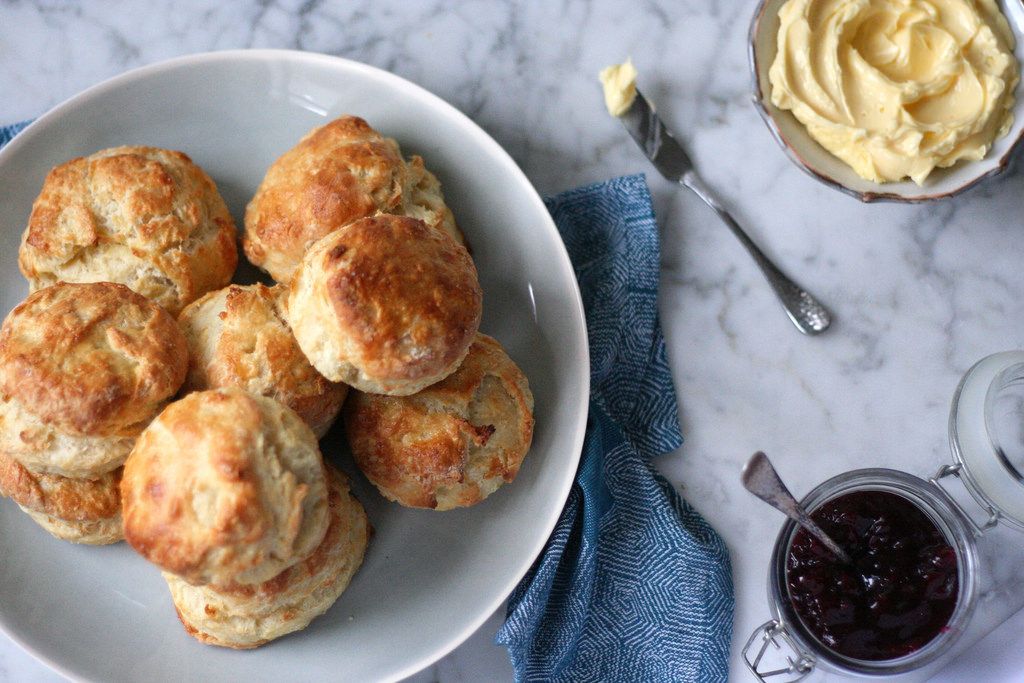
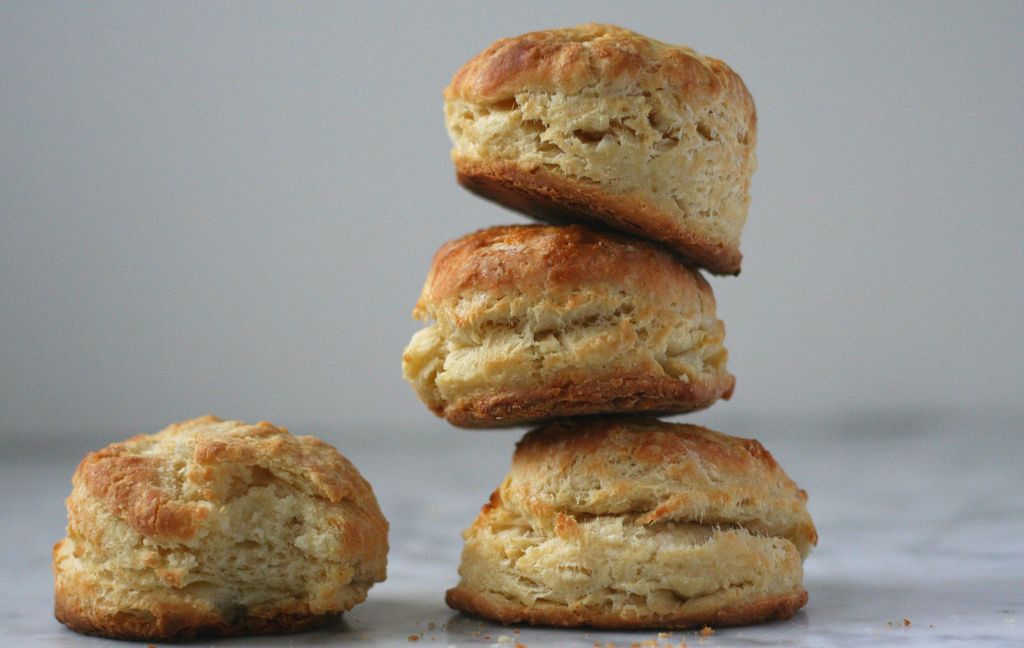
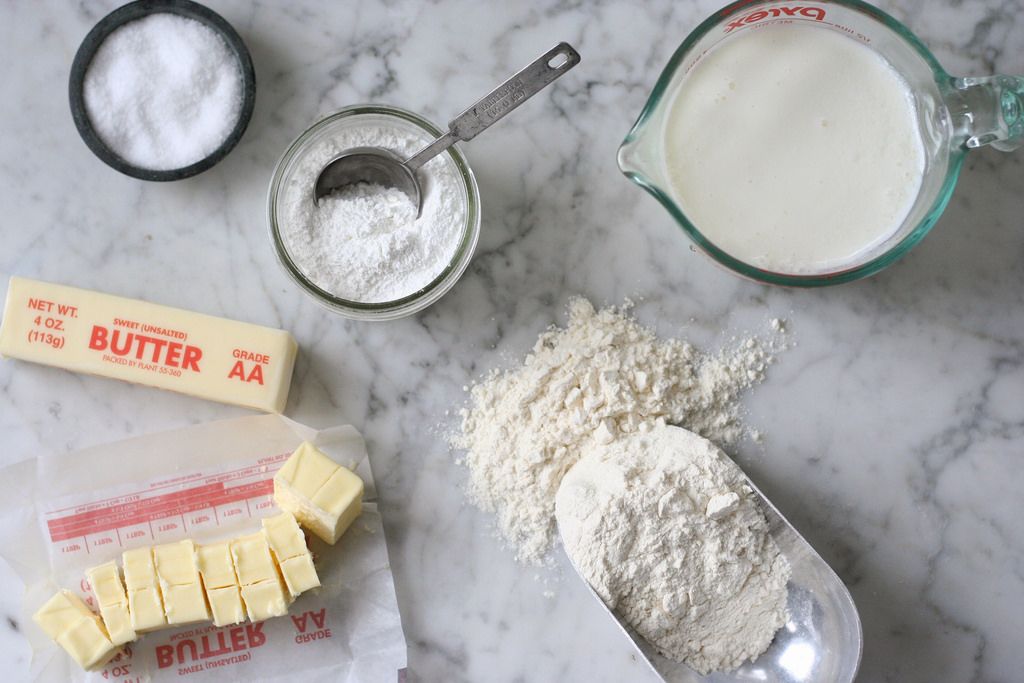
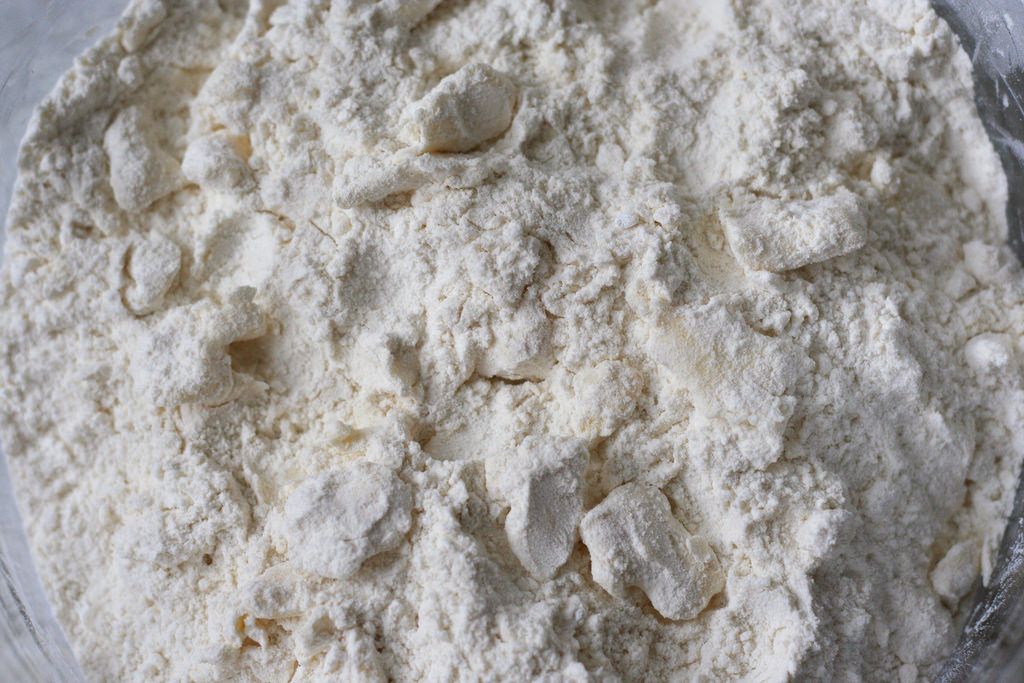
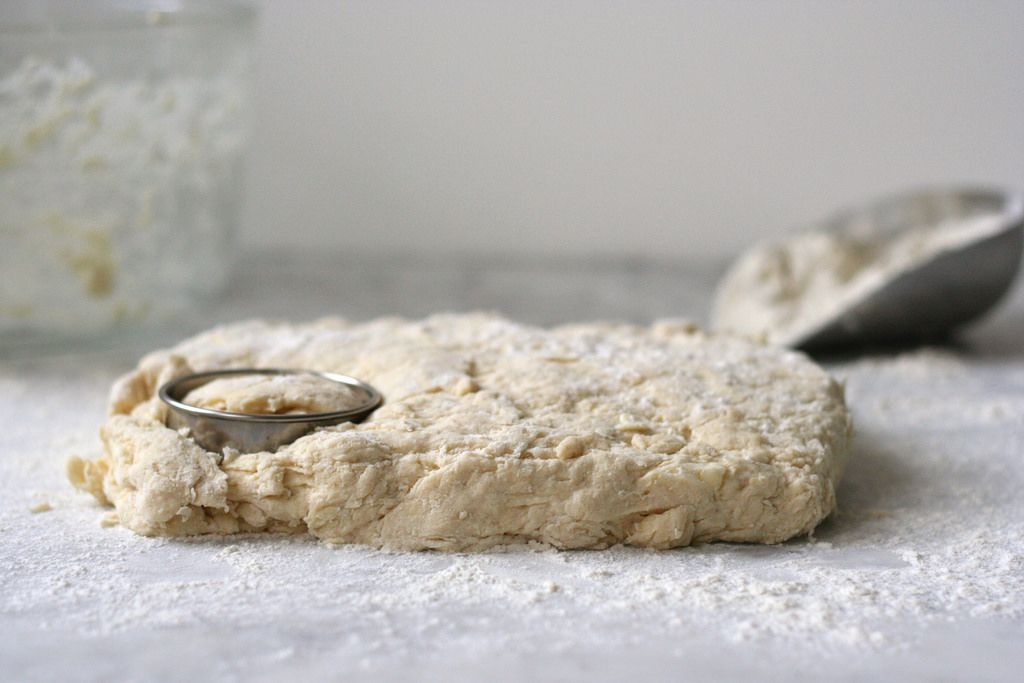
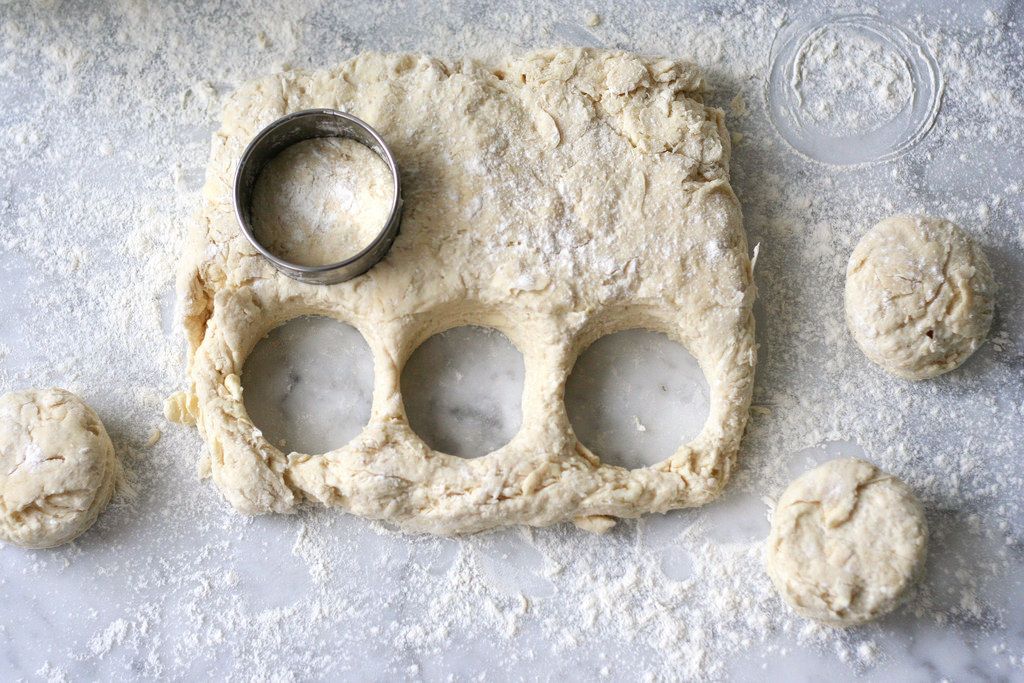
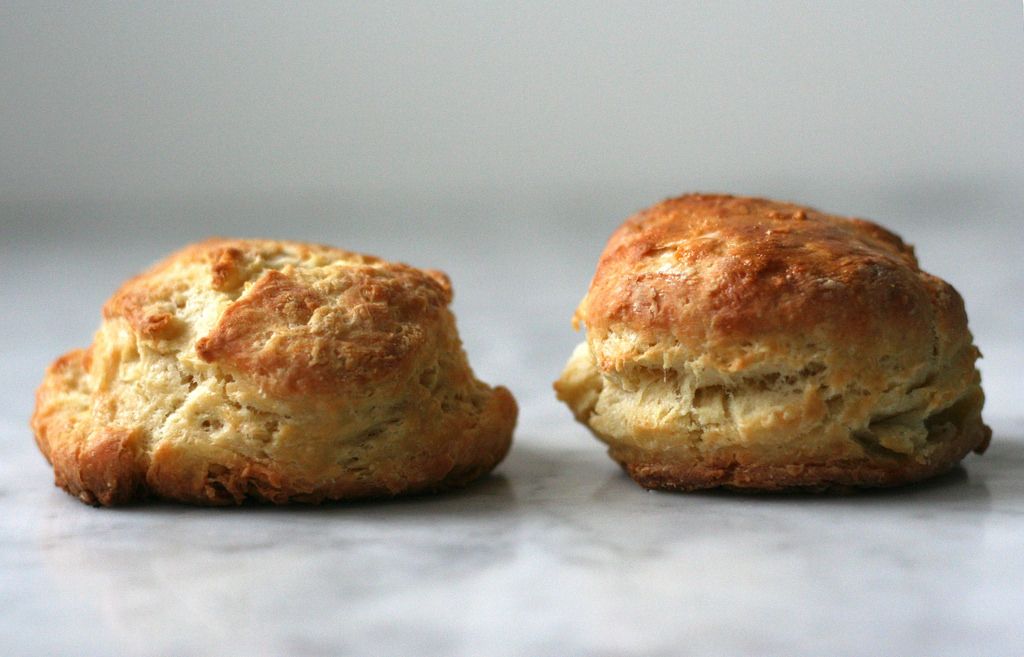
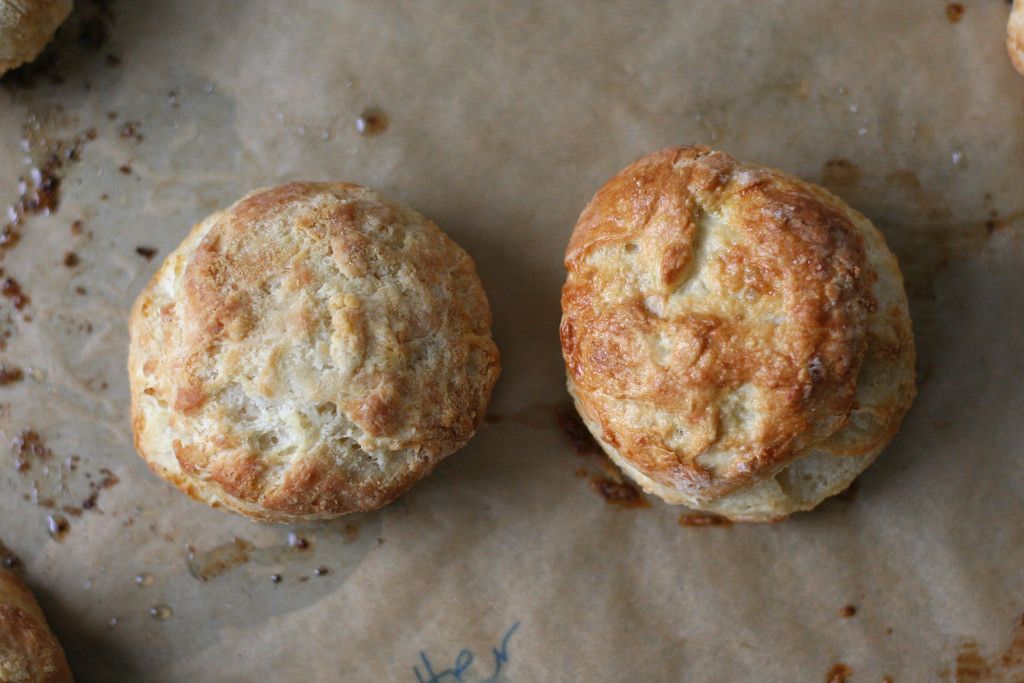
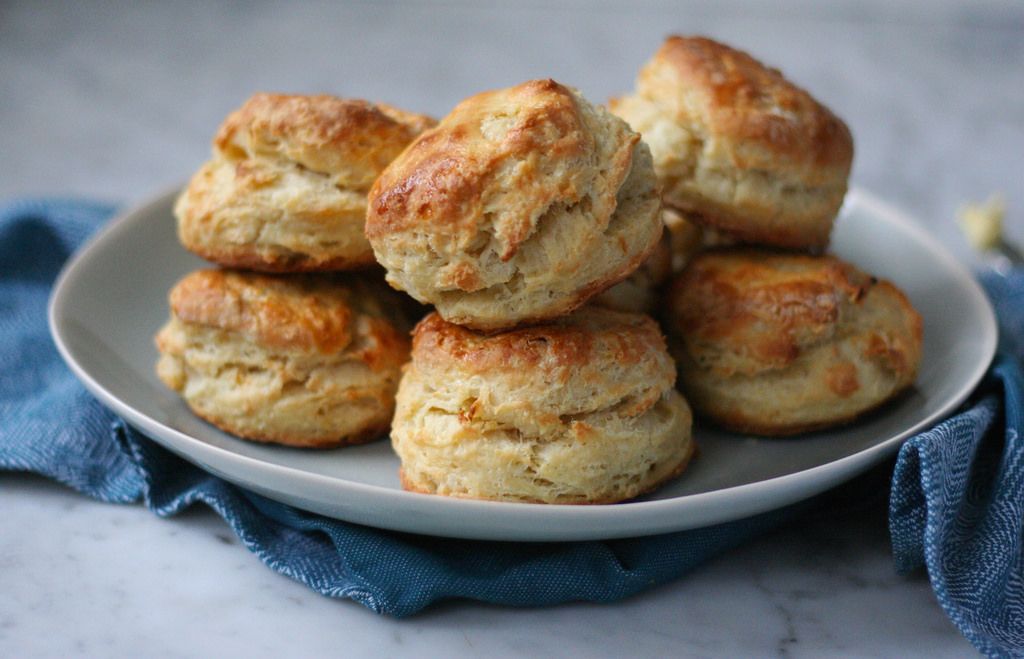

See what other Food52 readers are saying.